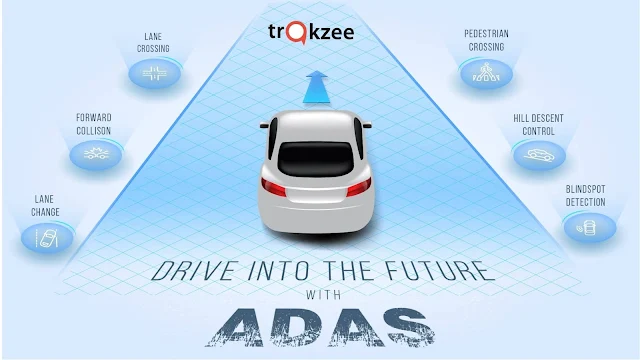ADAS: The Next Step Towards Autonomous Driving
 |
| Image Credit: Uffizio |
What is Advanced Driver Assistance Systems(ADAS)?
Advanced Driver Assistance Systems (ADAS) are a suite of electronic technologies that assist drivers in driving and parking their vehicles safely. ADAS systems use a variety of sensors, including cameras, radar, and lidar, to perceive the surrounding environment and provide the driver with warnings or take corrective action to avoid collisions.
ADAS systems are becoming increasingly common in new vehicles, and many are now required by law in certain countries. ADAS systems are effective in reducing crashes and fatalities, and they are expected to play an even greater role in future vehicles as autonomous driving technologies continue to develop.
Types of ADAS systems
ADAS systems can be divided into two main categories: active safety systems and passive safety systems. Active safety systems intervene to prevent collisions, while passive safety systems protect occupants in the event of a collision.
Active safety systems
Active safety systems include:
- Autonomous emergency braking (AEB): AEB systems use sensors to detect obstacles in the road ahead and can automatically apply the brakes to avoid a collision.
- Adaptive cruise control (ACC): ACC systems maintain a safe distance between the vehicle and the vehicle in front.
- Lane keeping assist (LKA): LKA systems help to keep the vehicle in its lane by applying steering torque.
- Blind-spot monitoring (BSM) systems are designed to alert drivers of other vehicles that may be in their blind spots. These systems help to improve safety on the road by providing an additional layer of awareness and warning drivers of potential hazards.
- Rear cross traffic alert (RCTA): RCTA systems warn the driver of vehicles crossing behind them when they are reversing.
Passive safety systems
Passive safety systems include:
- Airbags: Airbags inflate to protect occupants in the event of a collision.
- Seatbelts: Seatbelts help to keep occupants in their seats in the event of a collision.
- Crumple zones: Crumple zones are designed to absorb energy in the event of a collision, which helps to protect occupants.
Challenges of ADAS
One of the challenges of ADAS is that it can be complex and expensive to implement. ADAS systems also require careful calibration and maintenance to ensure that they operate properly.
Another challenge of ADAS is that it can be difficult for drivers to understand how the systems work and when they are engaged. This can lead to drivers becoming complacent and relying too heavily on the systems.
The future of ADAS
ADAS systems are expected to play an even greater role in future vehicles as autonomous driving technologies continue to develop. ADAS systems will be used to provide redundant safety systems for self-driving vehicles and to assist drivers in semi-autonomous driving situations.



No comments:
Post a Comment